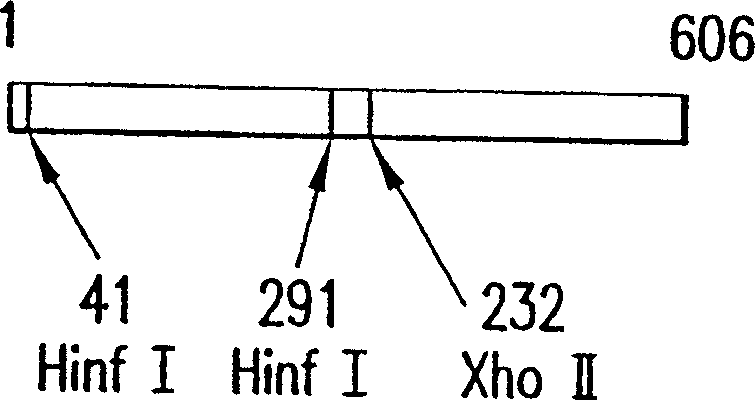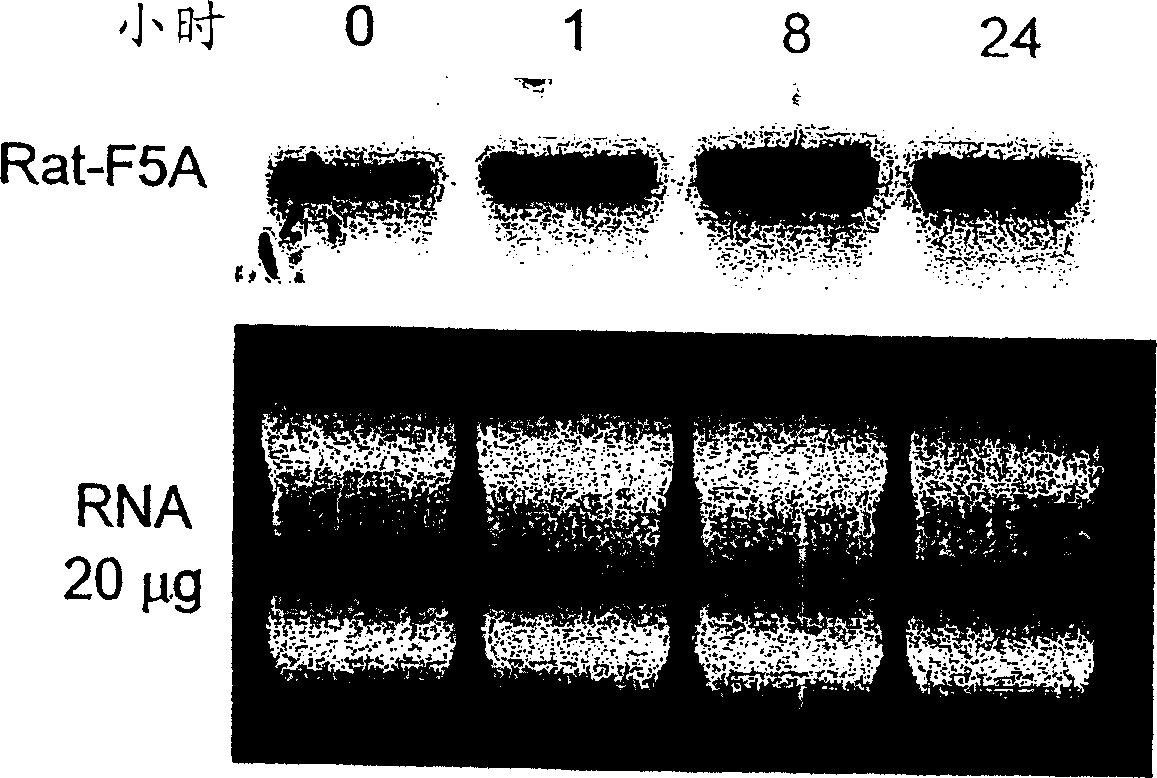Nucleic acids, polypeptides, and methods for modulating apoptosis
A technology of apoptosis and cells, applied in the direction of chemical instruments and methods, biochemical equipment and methods, apoptosis-related proteins, etc., can solve the problem of not completely blocking apoptosis
- Summary
- Abstract
- Description
- Claims
- Application Information
AI Technical Summary
Problems solved by technology
Method used
Image
Examples
Embodiment 1
[0148] This example demonstrates the isolation and characterization of a full-length cDNA encoding a rat eIF-5A nucleic acid exhibiting apoptosis-specific expression.
[0149] Induction of superovulation and apoptosis in rat corpus luteum
[0150] Immature (21-30-day-old ) female rats with superovulation. Seven days after treatment with HCG, luteal cell apoptosis was induced by subcutaneous injection of 500 mg of PGF-2α. Rats are sacrificed at various times (eg, 1, 8, and 24 hours) after PGF-2α treatment, and the corpus luteum is removed and placed in liquid nitrogen. Rats were sacrificed immediately before PGF-2α treatment to obtain control corpus luteum tissue.
[0151] Dispersion of luteal cells in rat ovary
[0152] 6-9 days after superovulation, rats were treated by subcutaneous injection of 500 mg PGF-2α at multiple sites. After 15-30 minutes, ovaries were removed from superovulated rats, placed in EBSS (Gibco) on ice, blotted dry, and weighed. Cut off the connecti...
Embodiment 2
[0187] This example demonstrates modulation of apoptosis with apoptosis-specific eIF-5A and DHS.
[0188] Culture of COS-7 cells and isolation of RNA
[0189] COS-7 (a Vero monkey kidney fibroblast-like cell line transformed with an SV40 mutant encoding wild-type T antigen) was used for all transfection-based experiments. COS-7 cells were cultured in Dulbecco's modified Eagle's medium (DMEM) containing 0.584 g / LL-glutamine, 4.5 g / L glucose and 0.37% sodium bicarbonate. The medium was supplemented with 10% fetal bovine serum (FBS) and 100 units penicillin / streptomycin. at 5% CO 2 Cells were cultured at 37°C in a humidified environment with 95% air. Cells were subcultured every 3 to 4 days by detaching attached cells with a solution of 0.25% trypsin and 1 mM EDTA. Disperse the detached cells in a new Petri dish containing fresh medium at a dissociation ratio of 1:10.
[0190] In 150-mm tissue culture-treated dishes (Corning), COS-7 cells to be used for RNA isolation were cu...
Embodiment 3
[0208] This example demonstrates modulation of apoptosis with apoptosis-specific eIF-5A and DHS.
[0209] Using the general procedure and method described in the previous examples, Figure 23 is a flow chart illustrating the process of transient transfection of COS-7 cells, wherein the cells in serum-free medium were incubated with plasmid DNA (in lipofectAMINE) for 4 hours, serum was added, and the cells were incubated for an additional 40 hours. Cells were then incubated in normal medium containing serum for an additional 48 h (i.e., no further treatment) prior to analysis, serum was removed for 48 h prior to analysis to induce apoptosis, or treated with actinomycin D prior to analysis Cells were incubated for 48 hours to induce apoptosis.
[0210] Figure 22 is a Western blot illustrating the transient expression of foreign proteins in COS-7 cells following transfection with pHM6. After sham transfection, pHM6-LacZ, pHM6-antisense 3′rF5A (pHM6-antisense 3′UTR rat apoptosis ...
PUM
 Login to View More
Login to View More Abstract
Description
Claims
Application Information
 Login to View More
Login to View More - R&D
- Intellectual Property
- Life Sciences
- Materials
- Tech Scout
- Unparalleled Data Quality
- Higher Quality Content
- 60% Fewer Hallucinations
Browse by: Latest US Patents, China's latest patents, Technical Efficacy Thesaurus, Application Domain, Technology Topic, Popular Technical Reports.
© 2025 PatSnap. All rights reserved.Legal|Privacy policy|Modern Slavery Act Transparency Statement|Sitemap|About US| Contact US: help@patsnap.com



